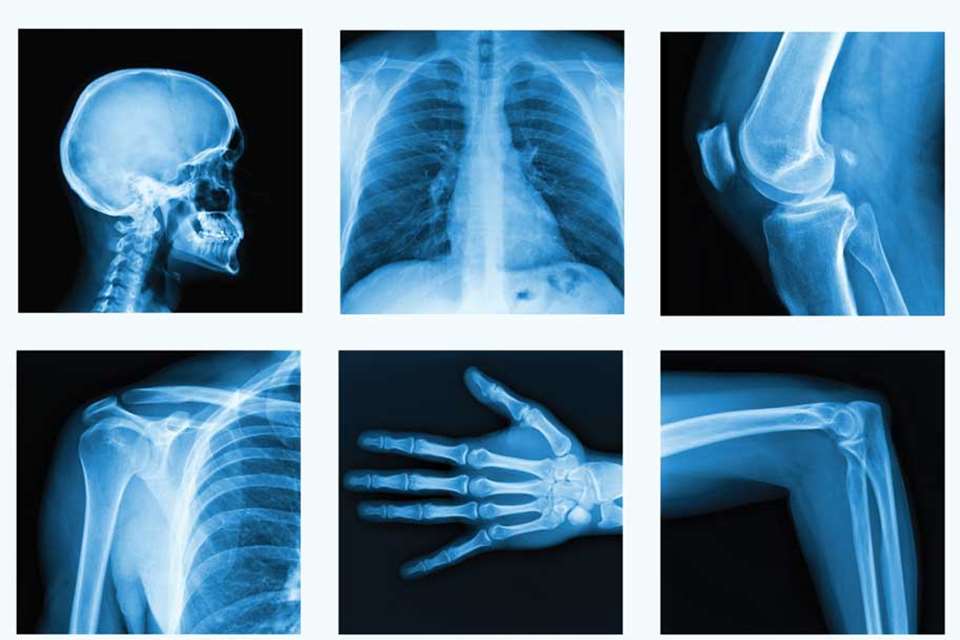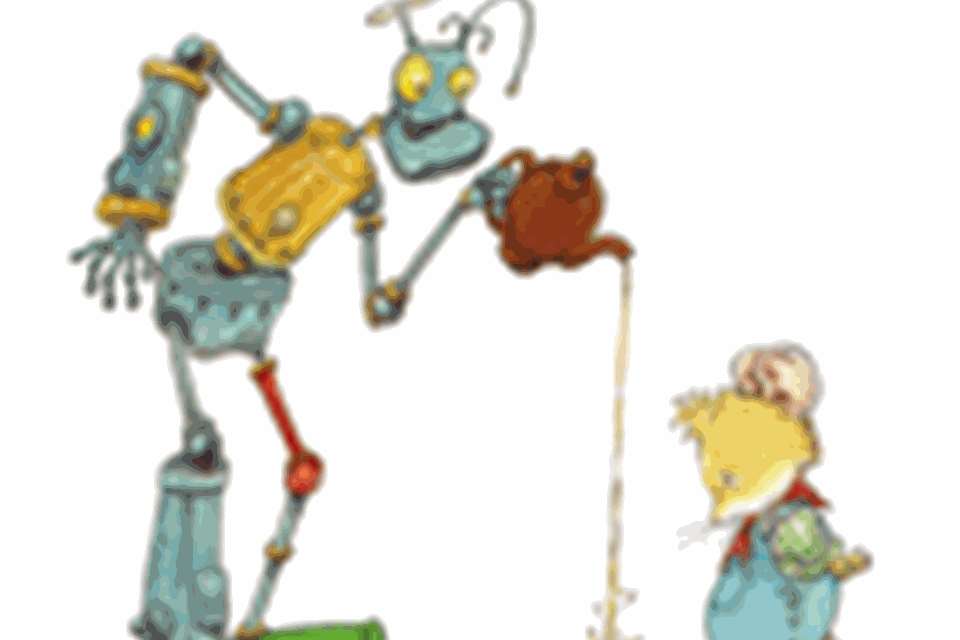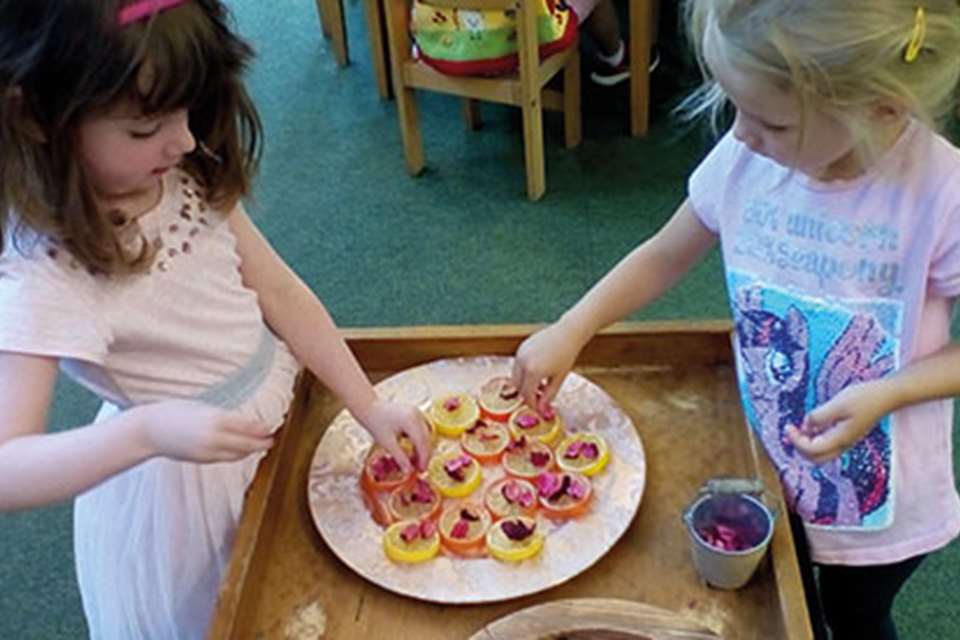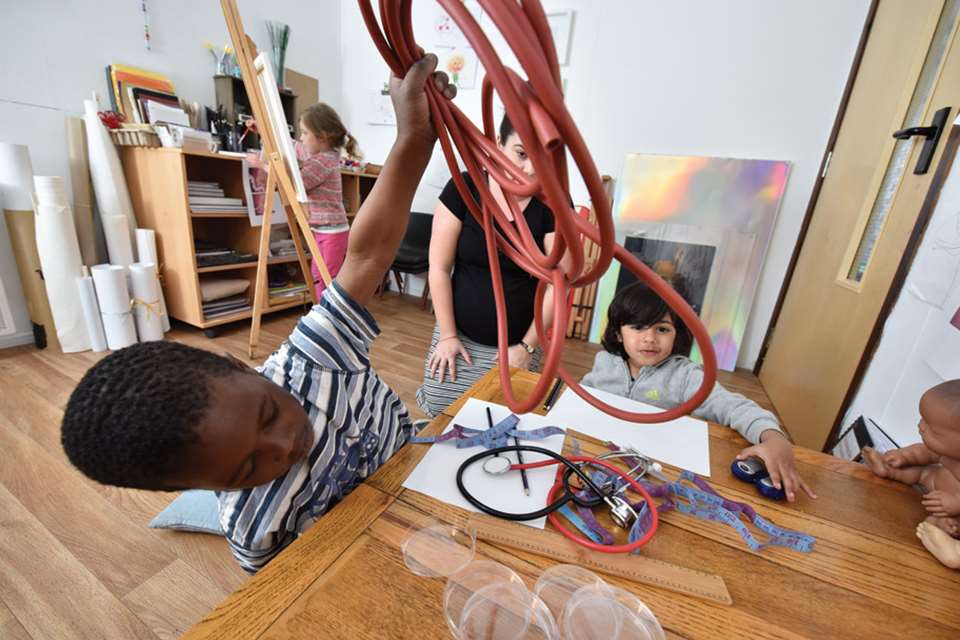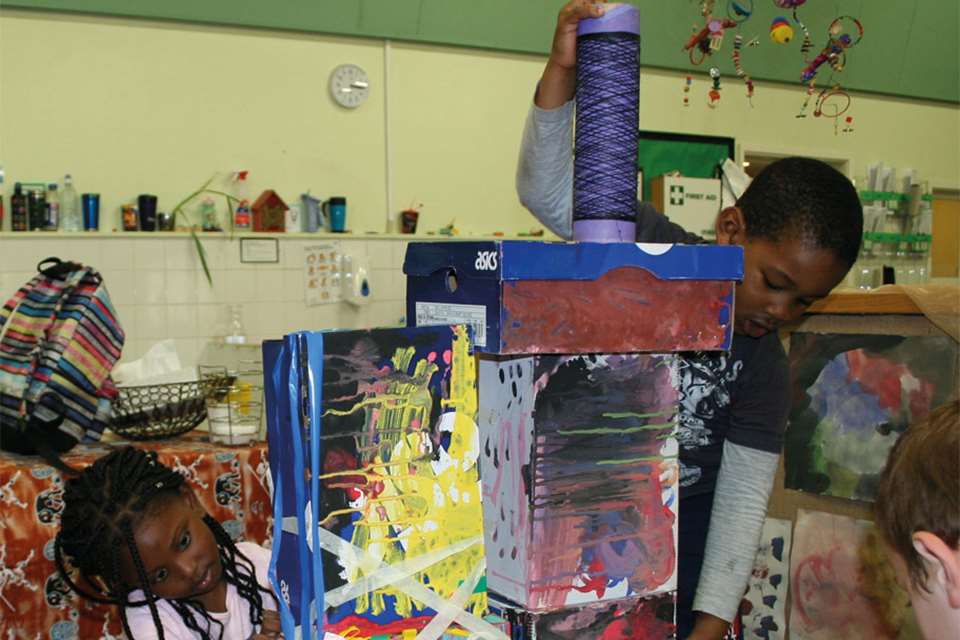EYFS Activities - We’ve explored… sculpture
Annette Rawstrone
Monday, November 11, 2019
How children at one setting went about creating a sculpture garden. Annette Rawstrone reports.

An overarching theme of ‘empathy and otherness’ resulted in children from Little Barn Owls Nursery in Horsham, West Sussex spending a year exploring sculpture and ultimately designing their own sculpture garden.
‘We’re not afraid to look at big questions and consider life and what makes us human,’ says resident atelierista Dillon Howling. ‘Empathy is fundamental to building relationships. It is interesting to start looking at it from an artistic perspective.’
He showed the three- and four-year-olds examples of art, and while they initially described what was depicted, they soon started to read the emotions portrayed within the pictures. For example, Finlay said, ‘He’s standing on a ball with a box on his head. He’s doing a dance.’ And when asked how he thought the character felt, he replied, ‘Excited!’
Mr Howling asked the children divergent questions to encourage their thinking. When Oliver was asked how he thought a chair feels, he said, ‘Sad’. Finlay agreed: ‘Yes, that’s because they get squashed.’
Mr Howling continued to encourage the children to ‘step into the shoes’ of the artist and characters depicted. This included showing them monoprints by Henry Moore. In response, the children tried to convey their own emotions through their artwork.
Once they were used to talking to each other about the feelings they saw in the artworks, Mr Howling began to provide a wider range of media, and presented sculptures. ‘This captivated them,’ he says.
The children were fascinated by the photographs of modern and traditional sculptures and enjoyed taking online virtual tours and videos of sculpture gardens: ‘They look like ice-creams!’ exclaimed Cara. ‘They look cross because a monster’s trying to get them.’ So, again, the children articulated what they felt was depicted by the sculptures. They also began to consider what a sculpture is – ‘When we get leaves, sticks and branches and build things,’ said Milo, while Theodore suggested, ‘My hands on top of each other.’
Mr Howling introduced clay for the children to explore. ‘It is tactile and easy to shape, which ensures creativity,’ he explains. ‘I wanted to see if the children could create and express an idea or emotion within an inanimate object.’
Children found making their own sculptures empowering, with Cara saying, ‘This is what artists do.’ Theodore described his artwork as, ‘It’s a sculpture of a place…of holiday.’

COLOURS AND MOOD
When discussing emotions in pictures, the children had begun to understand that colours can carry meaning and that artists deliberately choose colours to convey emotions. Theodore chose to paint his holiday sculpture green, explaining that it is a happy colour and his sculpture was of happy memories. ‘Red makes me sad and green makes me happy,’ he said.
Mr Howling thought it would be interesting to visit a local sculpture garden, but when he suggested it to the children, they pointed to their shelf of clay sculptures and said they already had one. So, it was decided to use their sculptures to build a garden.
‘Building the table-sized sculpture garden lasted months because the children kept researching and exploring,’ says Mr Howling. They decided it needed an entrance and path, but rather than simply using tape, they took photographs around the nursery and documented different paths before deciding on one made from slabs. ‘Cutting 100 slabs out of clay became quite a process,’ says Mr Howling.
They also introduced their own narrative of baddies wanting to damage their garden so they built a fence to keep them out. ‘They had put their heart and souls into the objects and didn’t want them broken,’ explains Mr Howling.
‘We looked at fences for a few months, including the fences around the nursery and YouTube clips of builders creating fences, which encouraged the children to think about how to build their own. The project kept developing, including learning woodwork skills, as they constantly reviewed and reflected on their work.’

VIRTUAL TOUR
While developing their garden, the children did visit The Sculpture Park in Farnham, which enabled them to experience the scale, materials and textures of the sculptures. They were also interested in Mr Howling taking photos with a GoPro camera and asked to use it too. Back at the nursery, they decided to use the camera to create a virtual tour of their garden.
‘They filmed around their garden and reviewed the photos and video,’ says Mr Howling. ‘They said that it was very bumpy, so I questioned how we could make it less bumpy.’
First, they tried putting the camera on the table, then explored using vehicles to move the camera around and create a ‘smooth’ film. ‘They decided that a Duplo train was smoothest,’ says Mr Howling.
The children then moved on to:
- drawing pictures of robots that could hold a camera
- using a webcam to take photos from a robot’s perspective and controlling it via the computer
- looking at remote controls
- discussing theories of what control is. ‘One boy said he’d drawn a picture that could control him,’ explains Mr Howling. ‘The children pretended to be robots with another child controlling them as they snaked along the floor’
- drawing pictures of family members to go in the garden
- working out how to reduce the size of their printed photos so they could fit into the garden
- exploring camera angles
- composing robot music with a keyboard connected to the computer to accompany the film.
Eight months into the project a robot, called Betsy, was made to film the garden. A major turning point came when Dylan realised, ‘Betsy’s way too big for the sculpture garden!’, and Annabelle suggested, ‘We could make a smaller robot or a bigger sculpture garden.’ Betsy won and the children chose to make a bigger sculpture garden.
ON A LARGE SCALE
They set to work drawing designs of sculptures and then democratically chose which ones to make and collaborated on creating them. ‘This is my plan,’ said Elise. ‘It’s a colourful flower sculpture. We can make it for the sculpture garden and it needs to be as big as me.’
Theodore designed a grass foot sculpture made of clay, wire and grass. Albert concentrated on planning an entrance for the garden and Mr Howling supported him to turn his concept into a 3D drawing.
‘They enjoyed planning, deciding and curating the entire project,’ says Mr Howling. ‘They would regularly reflect on what they needed to improve and talk about scale, what material should be used and how much would be needed.’
They used a range of materials for their sculptures, including: ✓ mod roc ✓ wire ✓ papier-maché ✓ paper ✓ wood ✓ aluminium ducting ✓tin foil ✓ chicken wire ✓wire mesh ✓clay ✓plaster ✓expanding foam ✓fabric.
‘There were failures as well as successes, not everything flowed as nicely as it sounds,’ says Mr Howling. ‘The ring sculpture initially was created using modelling wire which was then covered in tin foil then mod roc, but it was too heavy to hold its shape and collapsed.’
So, the children investigated the materials in the atelier and rebent the shape using copper tubing. ‘There was constant problem-solving, which made it more rewarding and led to new avenues of learning,’ says Mr Howling.
It took four months to complete the sculpture garden. ‘The scale was far larger than we could have ever imagined,’ says Mr Howling. ‘By the end of the project, the children understood that artworks are a language in themselves, and were able to represent their language in artistic media that was sophisticated and meaningful to them.’

CELEBRATIONS
The nursery invited family and friends to visit their sculpture garden exhibition. Children planned the event down to designing and posting tickets, writing signs for the garden and planning a café and gift shop. They also sold mini versions of their sculptures and T-shirts and keyrings featuring their designs.
In October, the children’s sculptures were displayed in the Hannah Peschar Sculpture Garden near Ockley in Surrey. ‘It made the children feel like powerful creatives to see their work displayed alongside professional artists, and it gave their work the appropriate value it deserved,’ says Mr Howling.
Download Now

